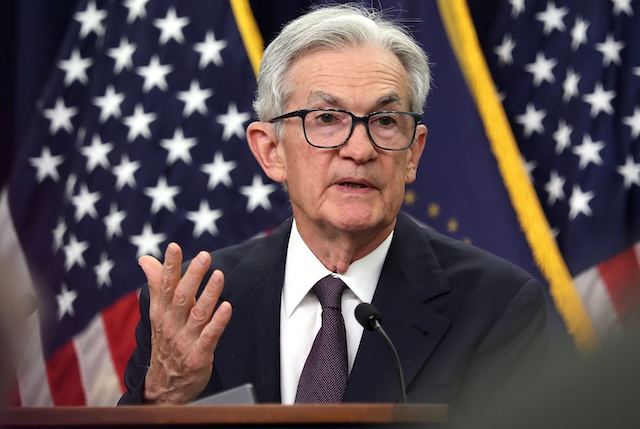Commentary: The Fed was right to say no on interest rates
Published 8:06 am Tuesday, August 5, 2025

- Federal Reserve Board Chairman Jerome Powell holds a news conference following a Federal Open Market Committee meeting in June. (Photo by Win McNamee/Getty Images)
The Federal Reserve resisted pressure from the White House last week and left its policy rate unchanged. It was the right decision. As Chair Jerome Powell acknowledged, the case for a cut was a bit stronger this time than in June — and two of the Fed’s policymakers, in rare dissents, voted to lower the rate by a quarter-point. For now, though, patience in relaxing the central bank’s “modestly restrictive” stance still makes sense.
As Powell explained, the Fed is grappling with conflicting information and heightened uncertainty. Economic growth has slowed in recent months, the pace of hiring has cooled and data published after the Fed’s decision showed that the unemployment rate edged up in July. Even so, inflation continues to run faster than the bank’s 2% target (core inflation was 2.8% in the year to June), it’s too soon to say how much the administration’s new tariffs will push up prices, and last month’s jobless rate of 4.2% still squares with policymakers’ “maximum employment” mandate.
In other words, there was no urgency to alter course. At the Fed’s next policy meeting, six weeks from now, things should be clearer.
Trending
While investors had expected no immediate change in the policy rate of 4.25% to 4.5%, many had hoped for a clearer signal of a cut next time. Yet, as Powell explained, it’s impossible to know how the calculation will shift — whether the risk to prices from tariffs will outweigh the risk to jobs from a policy rate that’s “modestly” higher than neutral. As things stand, the Fed had no good basis for hinting what it might do next time.
Indeed, it’s worth noting that the so-called neutral rate — the rate that neither adds to nor subtracts from aggregate demand — is itself in doubt. Many investors assume that once inflation is securely back to 2%, with the labor market at full employment, the policy rate can be trimmed over time to 3% (the median currently projected by the Fed for the “longer run,” hence implicitly deemed neutral). They forget that policymakers disagree on what neutral actually means: In their most recent summary, the range of opinion ran from 2.5% to 3.9%. Time will tell just how far above neutral the current rate really is.
What matters is that, for the moment, demand is adequate and unemployment is low. This makes the White House’s view — that tight money is throttling the economy and a cut in interest rates of three percentage points is needed — perplexing.
To be sure, medium- and longer-term rates are higher than before, making it harder to buy houses and cars, putting heavily indebted households under strain, and discouraging investment. But the crucial point is that a lower policy rate won’t necessarily help and could easily make matters worse. If the Fed is suspected of suppressing its best judgment for political reasons, inflation expectations will rise and the longer-term rates that set the cost of credit will spike.
The next two months will reveal more about what’s happening in the labor market and to what extent higher tariffs will raise prices. Right now, the Fed’s judgment looks right and the administration would be wise to keep its criticisms in check.








